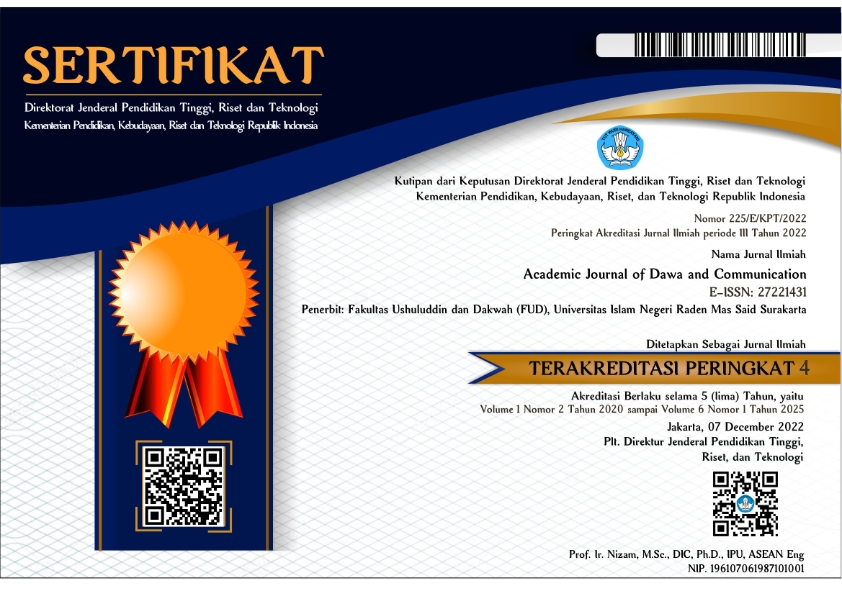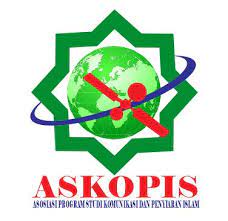Strategi Pengembangan Wisata Menara Kudus Berbasis Kearifan Lokal sebagai Upaya Pemulihan Ekonomi Masyarakat
DOI:
https://doi.org/10.22515/ajdc.v3i1.5059Abstract
The existence of tourist objects as one of the pillars of the community's economy during the pandemic is decreasing. Along with the increasing number of Covid cases in Indonesia, several tourist attractions were closed due to the PPKM. The research aims to formulate alternative strategies that can be implemented in the development of the Menara Kudus tourist attraction during the pandemic. This is descriptive research with primary data sources consisting of observations and questionnaires. Technical sampling was chosen non probability sampling, because Menara Kudus is one of the popular tourist attractions in Kudus and offers a tourism concept that combines religion and culture. The analytical method used is SWOT. The results show that the position of the Menara Kudus tourist attraction is in quadrant I, meaning that the Menara Kudus tourist attraction is in strong internal and external conditions. An alternative strategy that can be applied is to highlight local wisdom in the form of cultural celebrations whose implementation is carried out by implementing health protocols as the main tourist attraction, with the hope that the community's economy can bounce back after going through the pandemic.
Downloads
References
Adi, P., & Wibowo, S. (2014). Alternatif Strategi Pengembangan Desa Rahtawu Sebagai Daya Tarik Wisata di Kabupaten Kudus. Jurnal Wilayah Dan Lingkungan, 2, 245–256.
Adityaji, R. (2018). Formulasi Strategi Pengembangan Destinasi Pariwisata Dengan Menggunakan Metode Analisis Swot: Studi Kasus Kawasan Pecinan Kapasan Surabaya. Jurnal Pariwisata Pesona, 3(1), 19–32. https://doi.org/10.26905/jpp.v3i1.2188
Anggraeni, P., Sunarti, S., & Mawardi, M. (2017). Analisis Swot Pada Umkm Keripik Tempe Amel Malang Dalam Rangka Meningkatkan Daya Saing Perusahaan. Jurnal Administrasi Bisnis S1 Universitas Brawijaya, 43(1), 104–113.
BAPPEDA Kudus. (2022). Letak Geografis Kudus.
Cahyani, D., & dkk. (2021). Perumusan Strategi Desa Wisata Grogol Di Masa Pandemi (Studi Kasus Di Desa Wisata Grogol Kecamatan Seyegan Kabupaten Sleman). Jurnal Bisnis Dan Kajian Strategi Manajemen, 5(10), 211–235.
Dinas Kepemudaan, Olahraga, dan P. P. J. T. (2020). Pariwisata Jawa Tengah Dalam Angka. In Journal of Chemical Information and Modeling (Vol. 53, Issue 9).
Djakfar, M. (2017). Pariwisata Halal Perspektif Multidimensi. In Pariwisata Halal Perspektif Multidimensi.
Fanaqi, C., Pratiwi, R. M., & Firmansyah, F. (2020). Strategi Branding Pelaku Usaha Pariwisata di Masa Pandemi. Business Innovation and Entrepreneurship Journal, 2(4), 263–273. https://doi.org/10.35899/biej.v2i4.172
I Gusti Bagus Rai Utama, W. R. J. (2018). Agrowisata sebagai pariwisata alternatif indonesia : solusi masif pengentasan kemiskinan. Deepublish Publisher.
Ida Bagus Gede Paramita, I. G. G. P. A. P. (2020). New Normal Bagi Pariwisata Bali Di Masa Pandemi Covid-19. Jurnal Ilmiah Pariwisata Agama Dan Budaya, EISSN 2614, ISSN 2527-9734. https://doi.org/10.36275/mws
Irawan, A. (2021). Protokol Islam Dalam Penerapan Wisata Halal Selama Masa Pandemi. Kapita Selekta Pariwisata, 1(1).
Kasdi, A., Nashirudin, M., Farida, U., & Praatmana, N. D. (2021). Potential of Kudus as a new international pilgrimage destination in Indonesia: Halal tourism optimising local wisdom. International Journal of Religious Tourism and Pilgrimage, 9(1), 96–105. https://doi.org/10.21427/6a93-zn19
Kemeparekraf. (2021). Tren Pariwisata Indonesia di Tengah Pandemi.
Nisak, Z. (2013). Analisis Swot Untuk Menentukan Strategi Kompetitif. Academia, 468–476.
Pradisa, A. P. S. (2017). Perpaduan Budaya Islam dan Hindu dalam Masjid Menara Kudus. A213–A218. https://doi.org/10.32315/sem.1.a213
Puziah, D. S., Argenti, G., & Marsingga, P. (2021). Strategi Pengelolaan Pariwisata di Masa Pandemi Covid-19 ( Studi di Wisata Kawung Tilu Kabupaten Bekasi ). Jurnal Ilmu Sosial Dan Pendidikan (JISIP), 5(4), 1282–1290. https://doi.org/10.36312/jisip.v5i4.2553/http
Setyorini, H., Effendi, M., & Santoso, I. (2016). Marketing Strategy Analysis Using SWOT Matrix and QSPM (Case Study: WS Restaurant Soekarno Hatta Malang). Industria: Jurnal Teknologi Dan Manajemen Agroindustri, 5(1), 46–53. https://doi.org/10.21776/ub.industria.2016.005.01.6
Soendari, T. (2012). Metode Penelitian pendidikan Deskriptif oleh Tjutju Soendari. Metode Penelitian Deskriptif, 2(2), 15–23.
Subejo, S., Chamidah, N., Nirmalasari, N., Suyoto, S., Hariadi, S. S., Muhamad, M., Selvi, A. M., Siddiq, D. M., Imawan, K., & Isamayana, I. (2021). Strategi Komunikasi Dan Pemanfaatan Teknologi Informasi Dan Komunikasi Dalam Pengembangan Ketahanan Desa Wisata Pada Masa Pandemi Covid-19 Di Cirebon. Jurnal Ketahanan Nasional, 27(1), 90–111.
Sugiyarto, & Amaruli, R. J. (2018a). Pengembangan Pariwisata Berbasis Budaya dan Kearifan Lokal Pendahuluan Hasil dan Pembahasan Gambaran Umum Budaya Lokal Metode. Jurnal Administrasi Bisnis, 7(1), 45–52.
Sugiyarto, S., & Amaruli, R. J. (2018b). Pengembangan Pariwisata Berbasis Budaya dan Kearifan Lokal. Jurnal Administrasi Bisnis, 7(1), 45. https://doi.org/10.14710/jab.v7i1.22609
Suhalim, S. (2015). Aplikasi Metode Analisis Swot Untuk Merumuskan Strategi Bersaing Pada Pt Berkat Karya Lestari. Agora, 3(2), 392–399.
Tarigan, H., Sinaga, J. H., & Rachmawati, R. R. (2020). Dampak Pandemi Covid-19 Terhadap Kemiskinan di Indonesia. Pusat Sosial Ekonomi Dan Kebijakan Pertanian, 3, 457–479.
Zulkarnaen, H. O., & Sutopo, S. (2013). Analisis Strategi Pemasaran Pada Usaha Kecil Menengah (UKM) Makanan Ringan ( Studi Penelitian UKM Snack Barokah di Solo ). Diponegoro Journal of Management, 2(3), 108–120.
Downloads
Published
How to Cite
Issue
Section
Citation Check
License

This work is licensed under a Creative Commons Attribution-NonCommercial 4.0 International License.





















